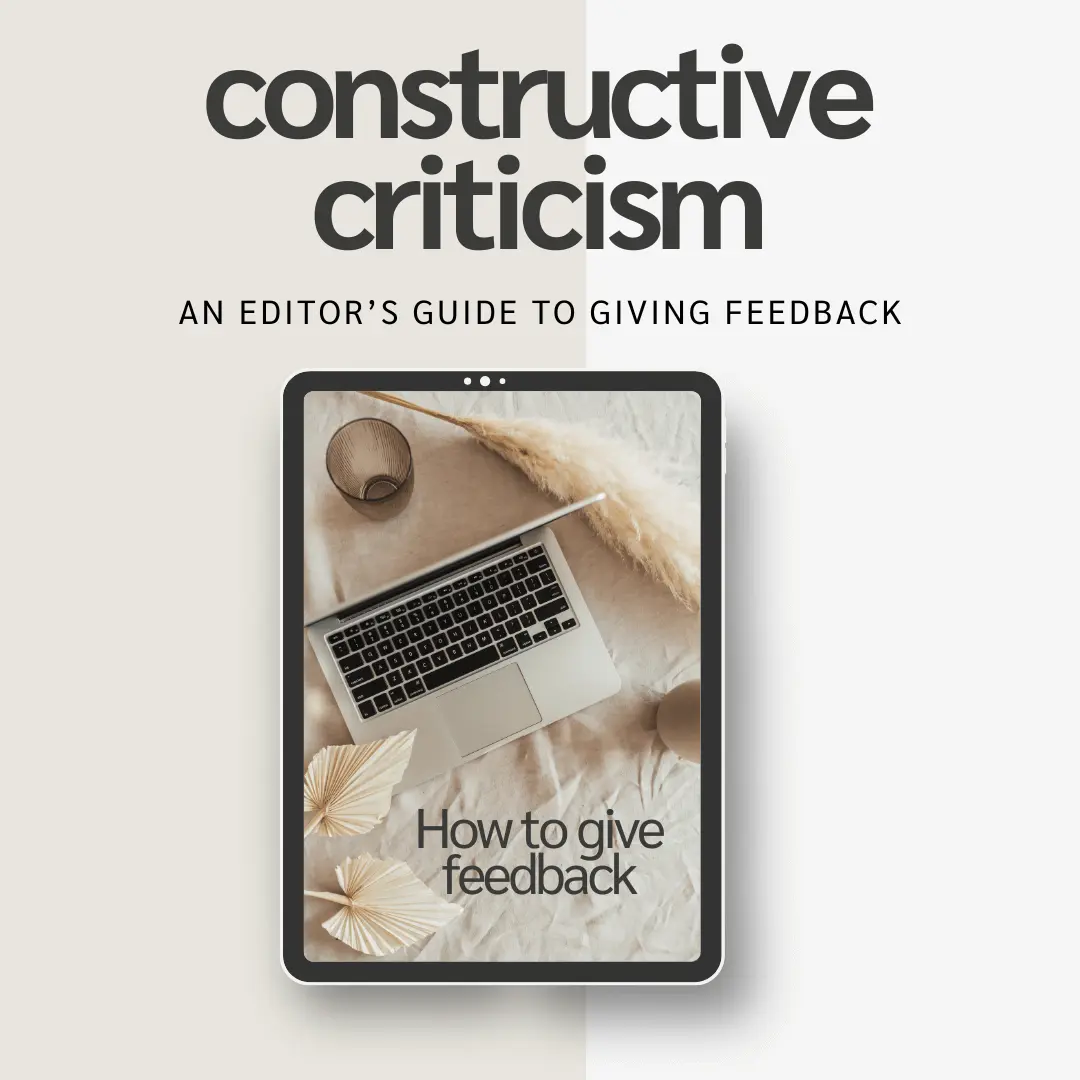Constructive Criticism: An Editor’s Guide to Giving Feedback
As an editor, I have realized something fascinating. I have been privileged to peek into the worlds of countless writers. Each piece carries its unique story and voice, adding richness to the literary landscape. Aside from these features, every writer puts a piece of themselves into any literary work. However, there is a universal need for constructive criticism amidst this diversity. I liken it to being on a treasure hunt, searching for hidden gems of improvement that can turn good writing into remarkable writing.
One pivotal factor to consider in personal and professional growth is constructive criticism.
Constructive criticism serves as a compass that can guide us toward improvement. It can also foster continuous development and a culture of excellence. However, only a few understand the intricacies of constructing criticism—the finesse, empathy, and clear communication required of this art. When used appropriately, it can yield positive results. Mishandled criticism, on the other hand, can lead to a barrage of negative output.
This article will explore the power of feedback, how to give constructive criticism, and how it can transform mere words into masterpieces at a time.
Understanding Constructive Criticism
Constructive criticism is feedback given with the sole aim of helping someone improve. Simply put, it is when someone gives you helpful advice to improve something, like when a friend tells you how to improve your drawing or do a puzzle faster. It provides specific, actionable suggestions for growth and development while acknowledging the individual’s strengths.
In contrast to constructive criticism, its opposite—destructive criticism—can harm individuals and relationships. Understanding the characteristics of constructive criticism is crucial for avoiding the pitfalls of its opposite and promoting a positive feedback culture.
Principles of Constructive Criticism
To understand constructive criticism, it is important to know how it differs from destructive criticism. Constructive criticism stands out because of certain key aspects that form its foundation. Some of these include:
1. Focus on Behavior, Not Personality
Focusing on specific actions, behaviors, or outcomes is essential instead of criticizing someone’s character or personality when giving feedback. This helps keep the discussion fair and focused on things that can be improved or modified.
2. Be Specific and Objective
When giving feedback, being specific and sticking to the facts is essential. Avoid making assumptions or using general terms. This way, the person receiving the feedback will find it easier to understand and take action on it.
3. Offer Solutions and Suggestions
When giving feedback on someone’s writing, it’s important to:
Offer helpful suggestions instead of just pointing out problems.
Provide actionable advice or recommend resources to assist them in improving their writing skills.
Show that you care about their success and are willing to support their growth.
To achieve this, follow these guidelines:
- Keep your sentences short and precise.
- Organize your ideas logically.
- Use everyday language that everyone can understand.
- Avoid using technical terms or jargon.
- Use active voice to make your feedback more direct and easy to understand.
4. Use the “sandwich” approach.
When providing feedback as an editor, you have to be constructive. An effective way is to begin with a compliment followed by criticism and conclude with another positive remark. This technique helps maintain balanced feedback and prevents any adverse effects.
Additionally, it’s essential to consider the recipient and provide them with relevant details. Using sentences that contain only necessary information can significantly enhance the clarity of the message.
5. Foster a Growth Mindset
When receiving criticism, you must see it as an opportunity to learn and grow as a writer. Feedback is valuable for improvement in any professional environment, as it always gives room for growth.
Practical Tips for Giving Constructive Criticism as an Editor
Here are a few tips you can take note of to help you give constructive feedback:
1. Choose the Right Moment
It’s important to consider timing when giving feedback. The right moment can make a big difference in how feedback is received. To create an environment for positive communication, avoid criticizing someone in public. Also, avoid giving feedback during stressful situations, as emotions can cloud a person’s ability to process it objectively.
2. Use “I” Statements
When providing feedback, it’s crucial to be constructive. One effective approach is to begin with a positive comment, then the criticism, and conclude with additional positivity. This technique maintains a balanced feedback and prevents any adverse effects. Additionally, it’s essential to consider the feedback recipient and provide them with relevant information. Using concise sentences that contain only necessary details will make the text more accessible and understandable.
3. Be Prepared to Listen
When editing, remember that feedback is a two-way street. Encouraging writers to share their perspectives helps build trust and respect and promotes constructive dialogue. It also validates the writer’s experience and helps resolve issues quickly. Ultimately, embracing this principle leads to better collaboration and higher-quality writing.
4. Follow Up
Following up with the individual when providing feedback is essential to ensuring they receive and act on the guidance effectively.
Following up demonstrates your commitment to the individual’s growth and success as a writer and editor. The feedback loop is critical, and follow-up is a crucial component of it.
When making changes to someone’s work, knowing if they understood and incorporated those changes is essential. Real-time feedback is helpful to ensure that the person is making progress. Follow-up is also necessary to provide support and guidance as needed.
Benefits of Giving Constructive Criticisms
There are many benefits to receiving constructive criticism for personal and professional growth, individual development, and overall success. Here are some of the key advantages:
1. Promotes Personal Development
Constructive feedback can help someone improve their skills, attitude, and output, thus increasing overall productivity. When writers are given this sort of response, they are able to examine what they did objectively.
People should recognize their strengths and weaknesses so that they may know what they are capable of doing better or worse than others. They can also use constructive criticism as an opportunity for self-reflection, which in turn fosters personal development.
2. Strengthens Relationships
Critique can be a powerful method of building relationships, which is true only when presented with tact and respect. It opens up dialogue between people and encourages teamwork through trust.
As an editor, creating an environment that embraces constructive criticism will allow employees to feel appreciated and supported and continuously grow in their strengths.
3. Encourages Creativity and Innovation
Providing constructive criticism helps individuals to analyze their ideas and experiment with novel approaches. When existing methods are challenged and constructive feedback is given, it drives creativity.
4. Boosts Confidence and Resilience
If you aim to boost a writer’s confidence and resilience, you have to give constructive criticism. It provides positive them with reinforcement and encouragement. Such feedback can help individuals develop the ability to face challenges, learn from setbacks, and persevere through adversity, enhancing their confidence and resilience.
Constructive criticism is more than just feedback. It can help you grow and develop personally and professionally. By understanding its principles, you can unlock your full potential and achieve success.
In this article.
Subscribe to our newsletter
About the author

Kazeem Ogunsanwo
SEO Content Writer, Editor
Writer’s Rating:
I’m Ogunsanwo Kazeem, and I love telling stories in the simplest, most captivating way possible. I’ve been working as a Content Writer and Editor for over three years now. What does that mean? Well, it means I write and polish all sorts of stuff—from academic papers to articles about anything you can imagine!


